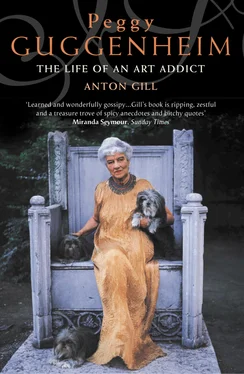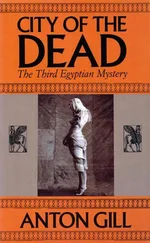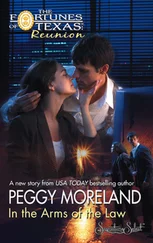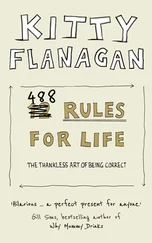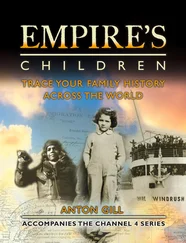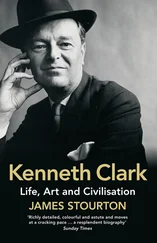Harold had already left for Europe, where his uncle’s letter reached him. He replied sharply: ‘From what little I know of your early career, it seems to me that you have more than once chosen the daring and visionary to the safety-first alternative …’ He did not get a reply.
The biographer Matthew Josephson was an associate editor of Broom as a young man, and a recollection in his memoirs provides an interesting footnote to this contretemps:
The curious thing about this episode is that a while later those same hard-boiled Guggenheim uncles of his wound up by imitating their poor relation Harold Loeb, and becoming patrons of the arts on a gigantic scale. Beginning in 1924, Uncle Simon donated some $18 million to the John Simon Guggenheim Memorial Foundation [named for one of his sons who had died of pneumonia in 1922 aged seventeen] which provided fellowships for hundreds of artists and writers, including quite a number of contributors to Broom whom Simon Guggenheim had formerly been unable to understand.
Broom ceased publication in 1924, and it was then that Harold went to Paris to work on his first novel. There he met the young Ernest Hemingway. Hemingway had had a few stories and poems published, but was still feeling his way as a writer. He was ambitious and insecure. What started as a friendship developed into rivalry and ended in unpleasant schism.
The bottom line is that Hemingway was envious of Loeb, who was both better educated and richer than he was. Loeb could and did outbox the boastful Hemingway, and he was a better tennis player. He also had more success with women, and at the time it looked as if he would outstrip Hemingway as a writer. When a party was made up to go to the running of the bulls in Pamplona, which Hemingway had attended before, and on which he held himself to be an expert, Loeb actually grappled a bull, was lifted aloft as he gripped the animal’s horns, then managed to disengage successfully, landing on his feet, eyeglasses still securely on his nose. The crowd roared their approval.
Hemingway, whose association with bulls was limited to talking about them and watching them die (something Loeb found distasteful), couldn’t forgive the perceived humiliation – the more so since Harold was making headway with Lady Duff Twysden, whom Hemingway had also hoped to impress.
Loeb did not set out to needle Hemingway, but the younger man’s resentment ran deep, and spilled out in his first novel, The Sun Also Rises (1926), in which a number of those present on the Pamplona trip in the summer of 1925 are cruelly portrayed; but none more so than Loeb, who appears in the book as Robert Cohn. Written in hot blood – Hemingway finished the novel in late September 1925 – The Sun Also Rises appears today so anti-Semitic (even when one allows for a period when anti-Semitism was, in certain circles, semi-acceptable) as to beggar belief. The real focus for Hemingway’s hatred of Cohn lies in the fact that he was in all ways bested by Loeb. Loeb rose above it, but never in his long life (he died in 1974) got over the betrayal.
The extent to which Hemingway caused offence is best described by Matthew Josephson:
After The Sun Also Rises came out, Harold said no more about Hemingway. Their friendship was ruptured. It seemed that in completing his story of the so-called ‘Lost Generation’, the young novelist had painted his circle of friends in Paris from life … there were at least six of [the novel’s] characters who recognised themselves in its pages and set off in search of the author in order to settle accounts with him, according to the reminiscences of James Charters [Jimmie the Barman], a retired English pugilist who was Hemingway’s favorite barman in Paris …
I had paused for a moment at the bar of the Dôme for an apéritif, and stood beside a tall slender woman who was also having something and who engaged me in conversation, at once informed and reserved. She had a rather long face, auburn hair, and wore an old green felt hat that came down over her eyes; moreover, she was dressed in tweeds and talked with an English accent. We were soon joined by a handsome but tired-looking Englishman whom she called ‘Mike’, evidently her companion. They drank steadily, chatted with me, and then asked me to go along with them to Jimmy’s Bar near the Place de l’Odéon, a place that had acquired some fame during my absence from France. In a relaxed way we carried on a light conversation, having three or four drinks and feeling ourselves all the more charming for that. Then Laurence Vail came into the bar and hailed the lady as ‘Duff’. At this, I began to recall having heard about certain people in Paris who were supposed to be the models of Hemingway’s ‘lost ones’; the very accent of their speech, the way they downed a drink (‘Drink-up-cheerio’), and the bantering manner with its undertone of depression. It was all there.
Suddenly Harold Loeb himself strode in vigorously, saw Duff, and stood stock-still; he had evidently heard she was in town and gone looking for her. He sat down at our table and said little, but looked his feelings much as Robert Cohn was described as doing. Duff’s English friend then made little signs of irritation at Harold’s presence (quite as in the novel). Laurence Vail ventured the remark: ‘Well now, all we need is to have Ernest drop in to make it a quorum.’
Laurence Vail was one of the people Peggy met and was fascinated by during the time she worked at the Sunwise Turn, and he was the one destined to have the most profound effect on her life; but at the time there were plenty of others: the poets Alfred Kreymborg and Lola Ridge were frequently there, as were the painters Marsden Hartley and Charles Burchfield, and, among the writers, F. Scott Fitzgerald. Peggy idolised Mary Mowbray Clarke, who became a role model for her as a liberated woman and a friend of artists.
Peggy, though she had no idea of how to mix with these new and intriguing people, and though she came to work swathed in scent, wearing pearls and ‘a magnificent taupe coat’, still had to work. And it wasn’t always fun. Her mother was suspicious of the bookshop and constantly popped in to check up on her daughter, embarrassing her by bringing her a raincoat if the weather turned bad, and irritating her with her questions. Equally embarrassing, though welcome to the bookshop (which throws a sidelight on Clarke), was a succession of Guggenheim and Seligman aunts who ordered books by the yard to fill up the shelves of their apartments and houses. These books were never intended to be read: they were a kind of wallpaper.
The work itself was mainly dull, routine filing, but Peggy did it willingly, for the joy of being in such a place more than compensated for the grind. One thing she did resent, however, was that she was only allowed down into the shop itself, from the gallery where her desk was, at lunchtimes, and even then she was only allowed to sell books if no one else was on hand. Whether Clarke considered her too much of a greenhorn or too much of a liability if let loose on the floor of the shop is unclear.
However, Peggy did gradually get to meet the people she wanted to meet, and she softened any reservations Clarke had by being not only a good employee but a good customer. In lieu of a wage, she was allowed a 10 per cent discount on any book she bought. To give herself the impression of getting a good salary, she bought modern literature in stacks and read it all with her usual voraciousness.
Among the other luminaries who frequented the Sunwise Turn were Leon and Helen Fleischman. Leon was a director of the publishers Boni and Liveright, and Helen, who like Peggy came from a leading New York Jewish family, had embraced the bohemian life. Following one of the fashions which succeeded the social upheaval marked by the end of the First World War, Leon and Helen played at having an open marriage. Peggy, who latched on to them as substitutes for Benita, whom she still missed bitterly, promptly fell for Leon. In a passage omitted from the bowdlerised 1960 edition of her autobiography, she tells us: ‘I fell in love with Leon, who to me looked like a Greek God, but Helen didn’t mind. They were so free.’ We do not learn whether or not the crush led to any kind of affair. Peggy then was more interested in settling into and being accepted by an artistic milieu.
Читать дальше
